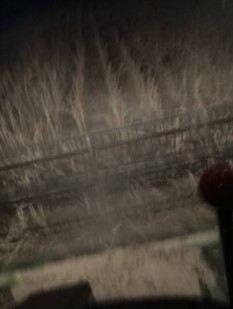By Cory Atkins
This is a harvest that just doesn’t end. We continue to get rain every week to 10 days – usually twice as much as was forecasted – and temperatures are cool enough that the fields are not drying out between those rains. The late harvest has also limited the ability to plant cover crops and winter wheat.
For example, we got nearly 13 cm, or 5 inches, of rain in mid-November, and another 2.5 cm, or 1 inch, about a week later. I still have about 8 hectares, or 20 acres, of soybeans left to harvest. When I last checked, water was still standing in much of the field. I hope it stops raining so that this field eventually dries out or the ground freezes so I can finish harvesting. And many farmers in the area have both corn and soybeans to harvest.
However, soybean yields have been better than anticipated, and soybean prices have been increasing through much of the fall. That will ensure that overall, I have a decent year farming.
My late-planted lima beans did endure a light frost, but the crop was salvageable. It was harvested late the first week of November and brought a decent yield.
In this region of the Eastern U.S., conservation programs provide a cost share for cover crops. This year, participation in these cover crop programs will be down because of the wet conditions. Once harvest is finally finished, it will be too late and cold to plant cover crops in those fields.
When I have been able to be in my fields, I have gotten as much work done as possible. Each year, I try to have cover crops or a winter wheat crop on 100% of my acres. This year, I have only managed to cover between 60 and 70% of my fields.
I have planted about half the winter wheat I planned. I usually double-crop winter wheat with either soybeans or lima beans. Though the wheat has emerged, it is struggling in the wet conditions. And we’ve reached the point in the year where I don’t plan to plant any more. Anything planted in December likely wouldn’t emerge and grow enough to survive the winter.
I also have planted as much of my planned cover crops as possible. I use a variety of cover crops as both single crops and mixes, depending on the crop that will be planted next spring. In fields going to full-season soybeans or lima beans, I use a mix of winter wheat and clover. In fields that will be planted to corn, I use hairy vetch or a radish and hairy vetch mix.
This season I am trying a new cover crop, Australian winter peas. I will learn how they work in my system. The seeds are a bit easier to handle and plant than hairy vetch, but it should provide the same amount of nitrogen in the soil for the following corn crop. The peas supposedly grow more vegetation to cover the ground before winter. They also appeal to deer as a food source, which supports both wildlife habitat and management through hunting.

Next spring, field preparation will look a bit different in fields that didn’t get cover crops planted, but I will adapt. That’s what farming is about – planning to do our best and adapting to the season to still deliver the best crops possible.
This has been a unique year. For me personally, it started with a trip to Mexico with close family and friends for my wedding. As it ends, we are now a family of three, with our newborn son.
Click here to see more...